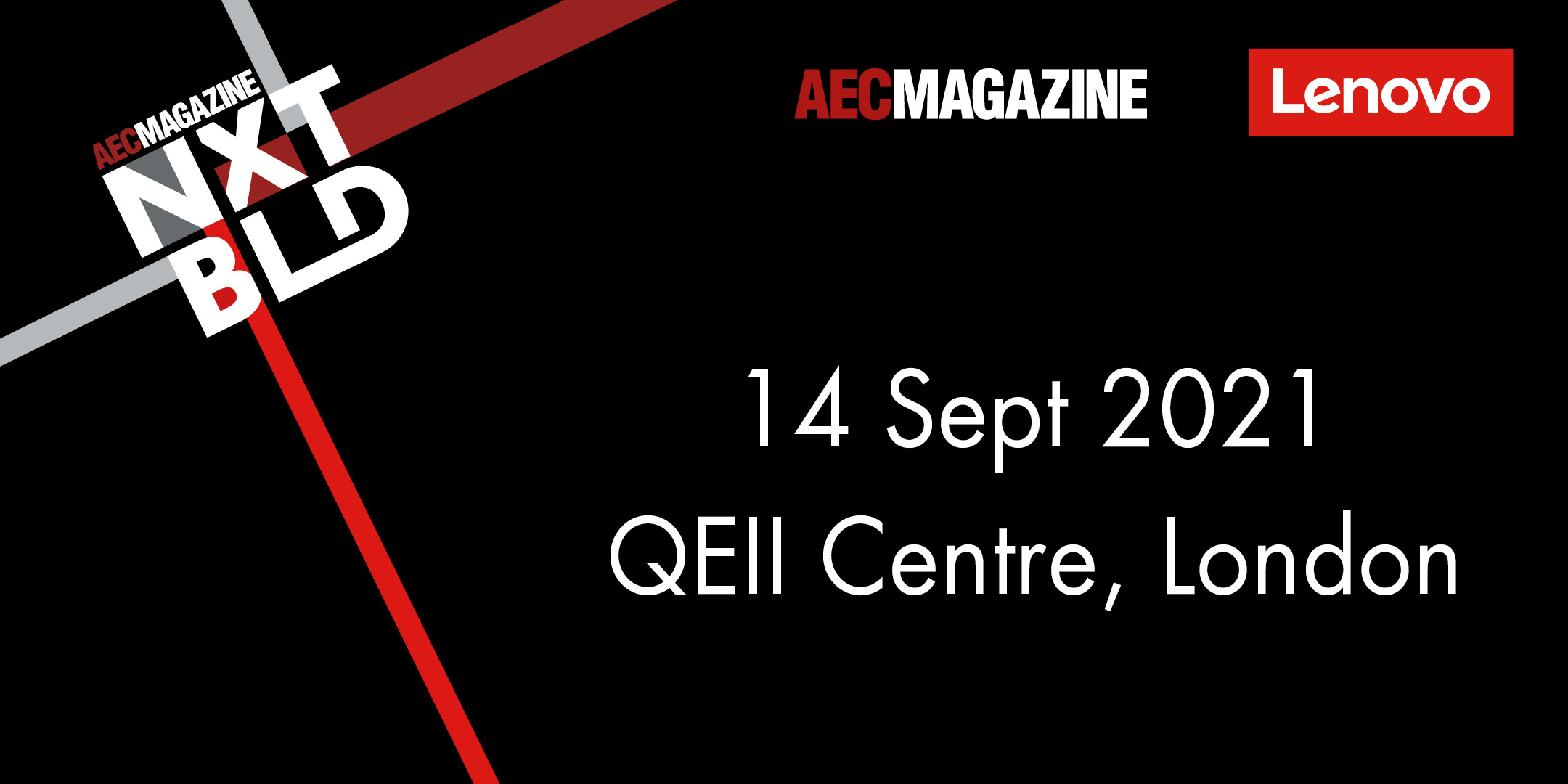Arkio is a VR-centric collaborative design system for AEC professionals. Regulars at our NXT BLD conference will have seen it develop from a conceptual idea to an affordable real-life product which has just been released. We talked to the developers about the journey
In 2017, while looking for interesting technologies to show at our first NXT BLD conference, we came across a young architect called Johan Hanegraaf, who taught himself how to program in Unity and pondered what a VR design system for architects would look like.
He gave a great demonstration , which captured all of our imaginations. The day after the event, Foster + Partners invited him to have a deeper dive.
In the years that followed we kept in touch with Johan and saw the concept slowly turn into a real-life product at Icelandic company Arkio. As VP of product Johan teamed up with CEO Hilmar Gunnarsson and CTO Haraldur Darri Thorvaldsson (aka Harri), who were industry veterans in collaboration, modelling and 3D printing. It’s been three years of development and Arkio, the product, is now set to launch.
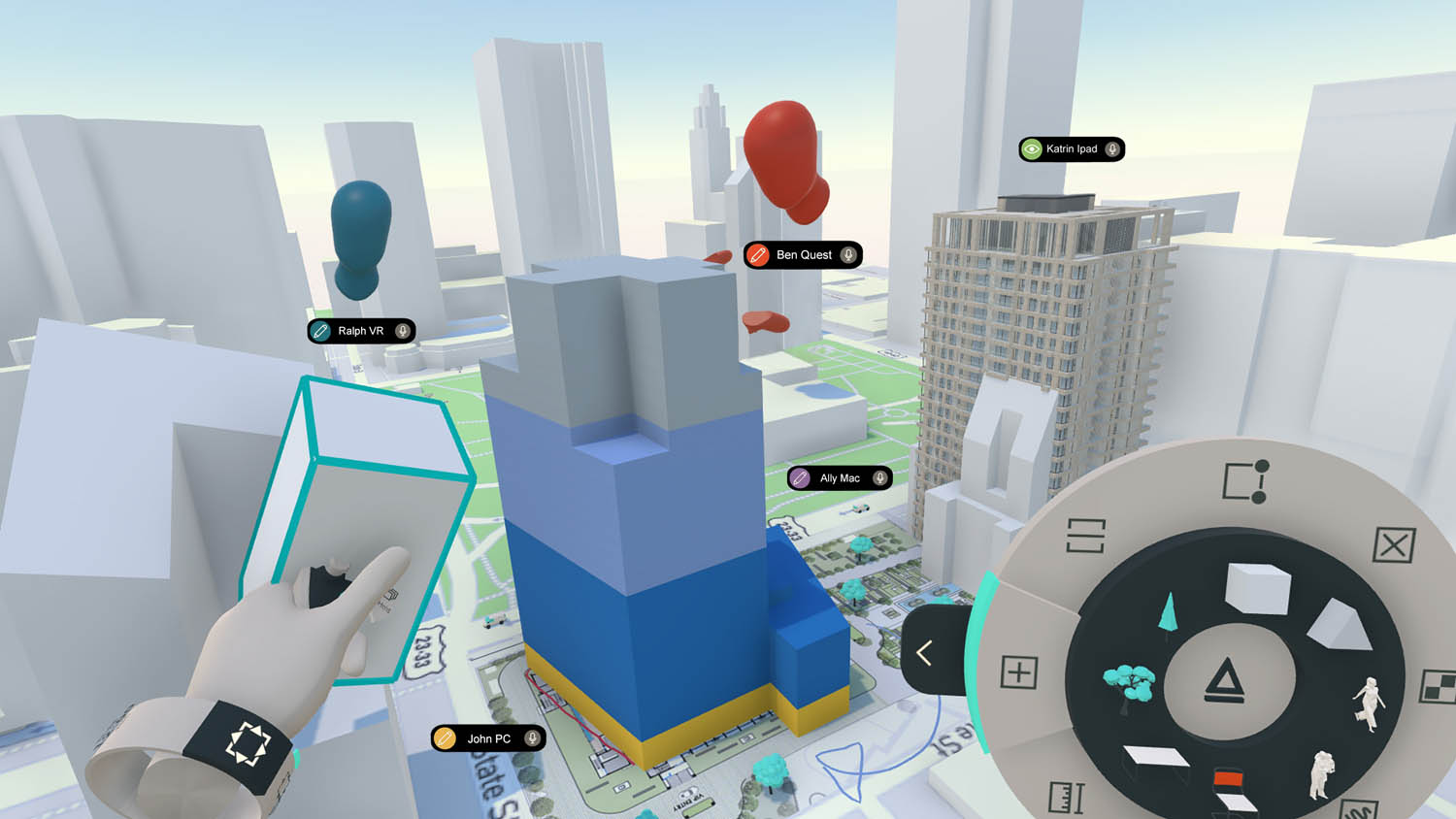
In October last year delegates of NXT BLD Virtual were treated to a demonstration of the beta version, together with a VR interview with Ernesto Pacheco, associate, director of visualisation at CannonDesign.
It’s interesting that the launch of Arkio proper comes around the same time as Nvidia Omniverse gets its first real public airing. Collaboration is a problem in our industry because of a lack of openness, lack of standards and inability of companies to decide on common tools.
Nvidia’s impressive solution costs tens of thousands of dollars and can use cloud-based instances with powerful Nvidia RTX GPUs. By contrast, Arkio costs from ‘free’ to just tens of dollars a month per user and runs on your desktop with a low-cost VR headset and, unlike Omniverse, you can actually model inside it. Arkio is collaboration for the masses and affordable to have on every designer’s seat.
We will have an in-depth review soon but with the launch upon us, we asked the development team – Johan, Hilmar and Harri – about the journey to get to this point.
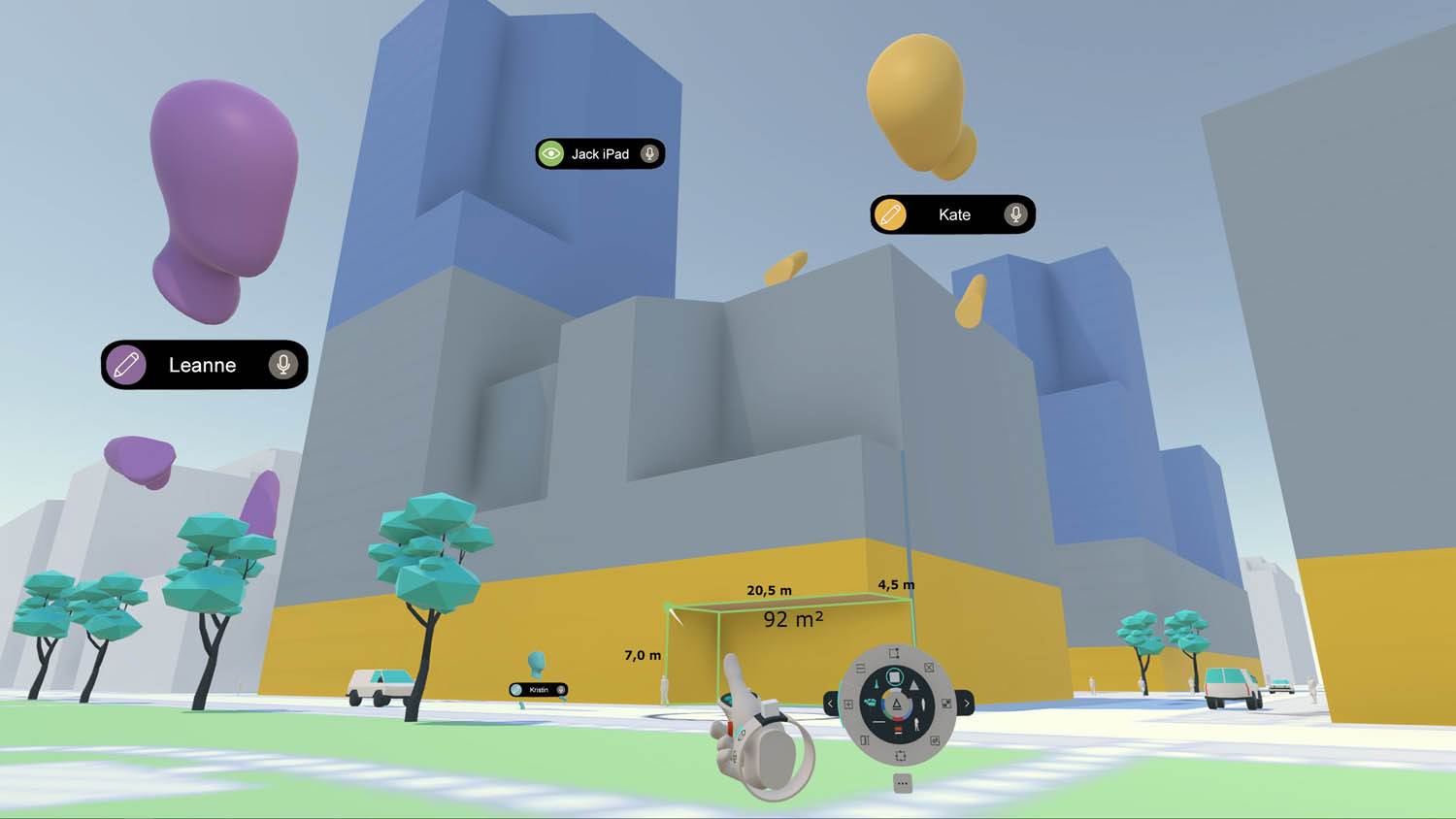
AEC Magazine: How did you all meet and set about developing Arkio?
Hilmar: Harri and I have been working together since 2013 when we created Modio, a 3D modelling tool that enabled anyone to design toys on a tablet or phone and 3D print them. We sold Modio to Autodesk in 2014 and spent two years at Autodesk following the acquisition.
After leaving Autodesk we asked ourselves what would be a fun and superambitious project to take on? Even though I’m not an architect I have always been fascinated by architecture and I wanted to somehow combine this with my passion for advanced technologies like Virtual Reality (VR) and create intuitive user experiences. And so it began, the first process of imaging how we could use the power of VR to make architectural design easier.
Harri: I began working on VR back in the 90s, using Virtual Reality Modelling Language (VRML) to build shared virtual worlds. I confess to being obsessed with distributed systems architecture and how to create massively scalable virtual worlds, a difficult challenge perhaps, but we have come a long way since the 90s and we have made something pretty special in Arkio – a next generation immersive collaborative design tool for architecture.
Johan: I met Hilmar and Harri when I was at Mecanoo [an architecture firm based in Delft, Netherlands], where I worked on new design technologies and started to build a prototype VR design tool that was first shown at NXT BLD a few years ago. Hilmar saw some of the work I had been doing and asked if I would like to join forces – the rest is history!
Hilmar: Johan is a rare talent that deeply understands the design process and is our expert in architectural design tools and workflows. Arkio is a collaborative design tool that enables people to easily design and work together in a shared virtual space. Our goal is simply to give designers superpowers and we believe we can offer a much more intuitive experience than current flat-screen design tools that just aren’t built for rapid iteration, creative exploration or real-time collaboration.
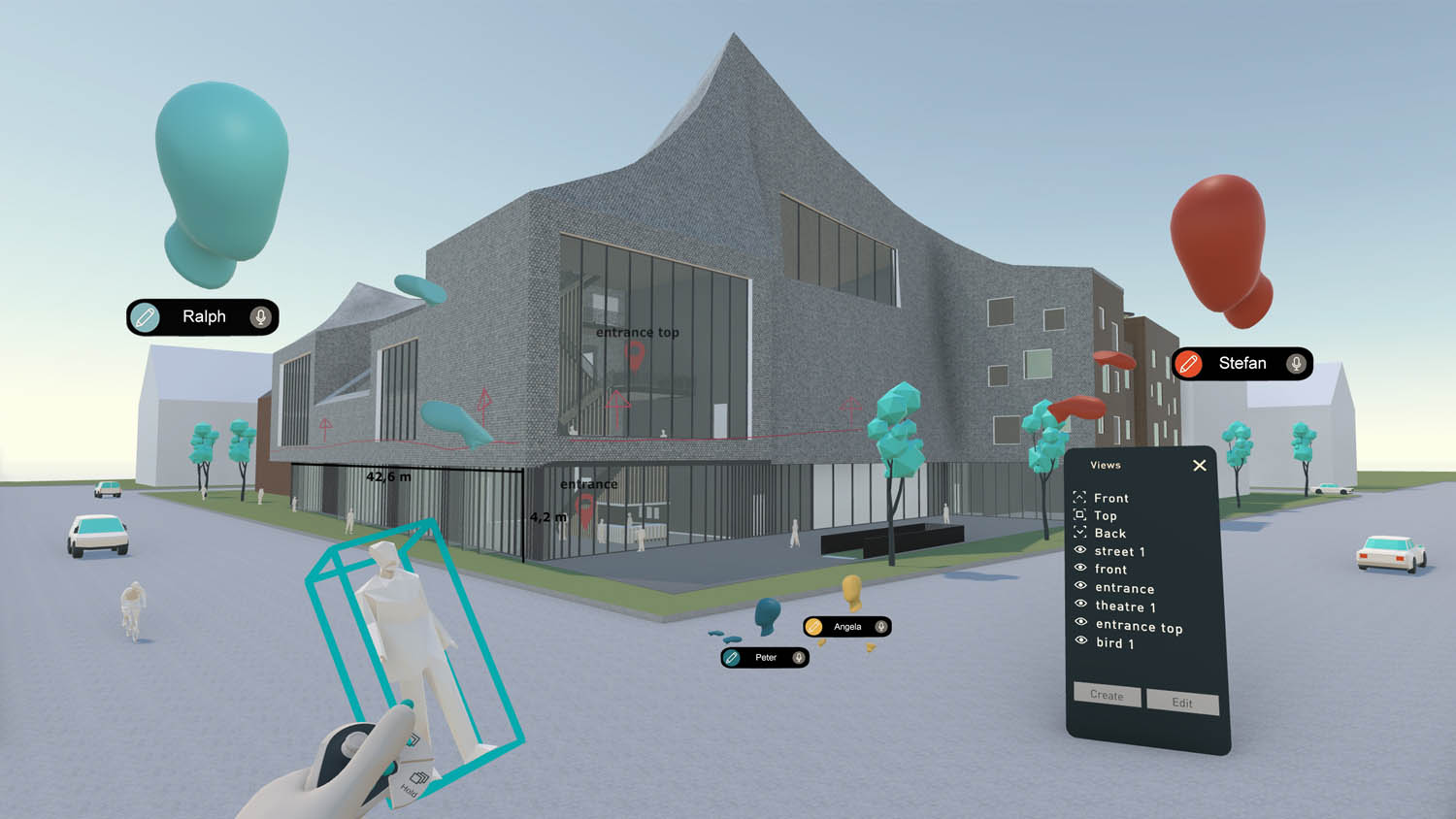
AEC Magazine: You say Arkio gives designers superpowers. Exactly what design issues was Arkio built to address?
Harri: Arkio was built from the groundup for use in VR and Augmented Reality (AR) where people can meet and be fully immersed in their designs. You can experience buildings at scale while shaping them with your hands in a physical and intuitive way long before any construction takes place. VR technology has been around for some time but it’s taken huge leaps in quality and affordability in recent years. You can now buy a standalone Oculus Quest 2 headset for $300, no PC required, and Oculus is selling them as fast as they can make them. Arkio was designed to run on standalone VR headsets as well as phones and tablets, since our aim is to allow everyone to participate in the design process.
Johan: During our beta we have seen a lot of different people use Arkio, including architects, interior designers and landscape designers. Some of them have also worked with their clients inside Arkio. Arkio has been used by architecture teachers and students, engineers and even hobbyists remodelling their own kitchen.
We have also worked with spatial designers from other fields like game, stage and theme park design. Existing design tools are not built with collaboration and easeof-use in mind and this leads to many inefficiencies and costly misunderstandings in the design and build process. If we can validate and make better design decisions earlier in the design stage, and connect this data back to other design tools, we can potentially save a lot of time and money.
Hilmar: Think of Arkio as a “3D tracing paper” where you can easily create new designs or import existing 3D models and add geometry and 2D sketches that get exported back to your design tools. You can work alone, but Arkio really shines when used with other people. In VR you feel like you’re shaping physical reality together. You can view projects at model scales or jump to human scale and just walk around, adjust and explore design options while immediately experiencing the results. The Arkio experience is about understanding space and massing, working together and making better and faster decisions in real-time.

AEC Magazine: Arkio offers some very interesting modelling capabilities – booleans and solids are featured. Are the models faceted or is there really a solid modelling engine in the system? When geometry is imported how much translation is required to thin out designs to hold in Arkio for editing? How many people can attend an Arkio session and what kind of hardware do they need?
Harri: While there are tools on the market that allow people to observe architectural models in VR, Arkio is the first design tool made specifically for architectural design work inside VR. To accomplish this, we built a bespoke solid modelling kernel, optimised for real-time physically-based modelling on mobile devices.
To ensure comfort in VR we run Arkio at a minimum of 72 frames per second on standalone headsets such as the Quest 2, while performing boolean modelling operations and collaborating with other users. Arkio’s solid modelling kernel is based on convex 3D cells, not polygons. The system is designed to enable fast boolean operations and shape editing on mobile devices while synchronising geometry changes at high frame rates. Cells are positioned and attached in a parametric graph and they double as a dynamic bounding volume hierarchy with cells containing other cells.
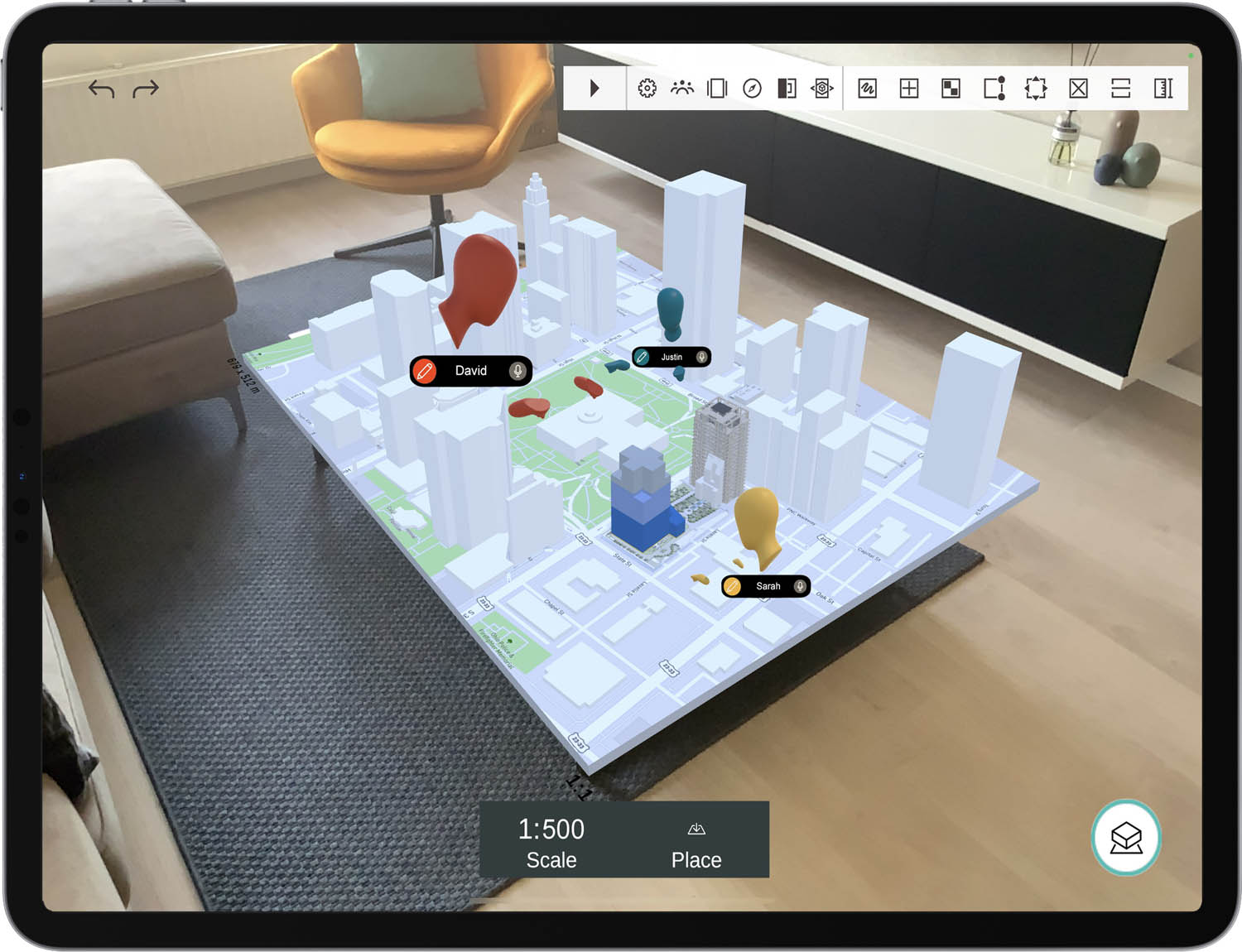
Johan: Arkio runs on desktop PCs, tablets and phones so you can have collaborative design sessions with other people even if some of them don’t have VR headsets. To assist with this we have also made most of the design and communication capabilities available in a flat-screen version. For imported 3D models we provide plug-ins for Revit, Rhino and Sketchup so that users can easily send models to Arkio. We optimise the geometry so it can also be imported into Arkio on mobile devices.
As there are limits to the size of models that can be loaded on such devices we warn users about any potential issues so they can always choose to export, for example, a subset of a model. As for the number of users that can attend an Arkio session, we’ve seen people host design meetings with more than 20 users. We can support even more, but this depends on the devices being used and how many people are modelling at the same time.
AEC Magazine: As we understand, one of the key benefits of Arkio is its integration and support for standard AEC tools such as Revit and Rhino, when geometry can be sent back and forth to Revit. How does this work?
Johan: With our plug-ins we support fully bi-directional workflows with both Revit and Rhino. If you export a model to Arkio, you can load and view that model with other people in Arkio, add geometry on top of it and send the resulting work back to Revit or Rhino. We also support auto-updating previously imported models, so if you save a new export, it automatically updates inside Arkio.
We support Revit both with our local plug-in and through our integration with Autodesk BIM 360. Since Arkio is a solid modeller we don’t export Arkio geometry to Revit as triangle meshes, but instead recreate the Arkio solids inside Revit as native Revit geometry and families. That means you can easily work with masses or generic model families with Excel program metadata to apply facades or floors and switch out family instances. We have even created Revit families for our entourage and mapped them to Enscape assets resulting in stunning renders of Arkio models in [real-time viz tool] Enscape.
AEC Magazine: The software has been in beta for quite a while now. What have you learnt from beta testers about the features they want and how they want to collaborate? Have the attitudes of the beta testers to VR changed in their exposure to Arkio? What about their workflows?
Harri: Our goal has always been to make Arkio easy to learn and use and we have seen people modelling some pretty spectacular things after only 30 minutes – something that is unheard of when it comes to typical 3D modelling tools that often require days or weeks of training. One of my favourite comments during the beta is from someone who had never done 3D modelling before but was able to model their house and kitchen within a day of downloading Arkio onto a VR headset.
Johan: We received many requests for being able to use Arkio without VR as not everyone has a headset. Making Arkio available on desktops and mobile devices makes it straightforward for people to collaborate. It has been amazing to see all the different use cases and creative ways the beta testers have used Arkio, from students to professional designers to educators to hobbyists. One of the more memorable uses of Arkio during the beta was when CannonDesign in the US used Arkio to win new projects during Covid by presenting their designs from inside Arkio to potential clients watching via Zoom.
Hilmar: Our approach is to be open and transparent about our plans and to ask for feedback on new features and capabilities as soon as possible. We actually showed the first alpha version of Arkio at Autodesk University in late 2017 and since then we’ve been in constant communication with our beta users all over the world.
We have also seen our beta users start to re-think how to collaborate in design teams now that they can easily get together inside Arkio, carry out actual design work and explore spaces together.
Designing architecture together inside an immersive space simply hasn’t been possible in this way before. It is eye-opening for designers to be able to design inside VR instead of merely using it as a medium for viewing. VR/AR has the potential to be the ultimate creative medium for architecture.

AEC Magazine: For a first release there seems to be an enormous amount of capabilities. Are there any additional features that aren’t quite ready for this release and what can we expect to see as the platform develops?
Harri: Development is never ending and we will always find ways to improve as technology continues to grow. We plan to develop Arkio further across four key areas: giving our users more advanced modelling capabilities, better tools for control and communication in design meetings, seamless integration with other 3D modelling tools and improving the capabilities of the Arkio flat-screen version. Over time, we envision people designing more and more complex architecture inside Arkio and we look forward to making full use of the parametric nature of our modelling kernel to enable some truly unique design workflows.
Johan: Version 1.0 definitely has a lot of capabilities, but the magic of Arkio happens at the intersection of real-time modelling, collaboration, workflow integration and being fully cross-platform. The time feels right to bring Arkio to market now, especially with highperforming standalone VR headsets being available at such low cost.
Hilmar: Today we are just scratching the surface of what the system will ultimately support in terms of creating advanced geometry and scaling to larger and more complex models while handling levels of details and visibility culling.
It has been demanding but we felt strongly that we had to get the user experience right and bring Arkio to as many devices as possible before releasing. Creating our own modelling kernel was an important decision as we don’t think there’s any other way to create a realtime, immersive and collaborative design tool like Arkio.

AEC Magazine: Could you explain the cost structure and capabilities of the various Arkio usage options?
Johan: Arkio will be completely free until September 1, 2021. After that we will offer three plans. There will always be a Free version of Arkio to try out the basics and participate in design meetings as a viewer. Arkio Pro will enable users to host large design meetings and use our integrations with design tools like Revit and Rhino and Arkio Enterprise will offer additional capabilities such as integration with Autodesk BIM 360, guest editors in meetings, additional support, training and professional services.
Hilmar: We wish for Arkio to be affordable so everyone can experience the full power of immersive, collaborative design. Arkio Pro will be priced at $55 per month per floating licence when billed annually, or $70 when billed monthly. Arkio Enterprise will be priced at $85 per month per floating licence, and will be billed annually. Arkio is available for download now for all major VR headsets, for iOS and Android phones and tablets, and we also have a PC installer available for download.
Arkio at NXT BLD
Arkio’s Johan Hanegraaf and Hilmar Gunnarsson will be hosting a live collaborative VR presentation at NXT BLD 2021 at the QEII Centre, London on 14 September 2021. Hopefully we will also get an update on what features we can expect next and use cases of early adopters. Early bird tickets are available for £49. Book your seat now.


